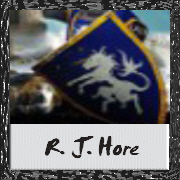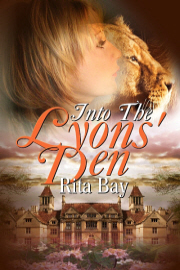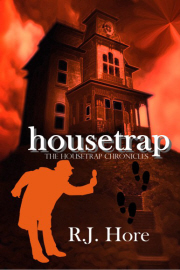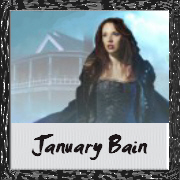In the last step of Storybuilder Inc., I talked about developing your story into a 3-part outline. Did you manage to capture a unique, gripping end scene then build a bridge to it from an unlikely beginning? If so, then it sounds like you’re growing a good story.
Today I will talk about organizing the characters, settings, and world details that are no doubt taking shape as you knead out your storytelling dough.
>>>>>>>>>>>>>>>>>>>>>>>>>>>
Dealing with the clutter
A story is easy to manage when it’s only one sentence. Even the simple paragraphs that make up your 3-part outline are manageable. But you are going to write more than three paragraphs, and every one of them has to be important.
Fortunately, your story is like a tree. Even though there are countless leaves, they all trace back to the trunk and main branches. You can think of the story’s paragraphs as the leaves. The shoots that bear them are the characters, the main branches are the settings, and the trunk is the premise. And as it grows upward, it grows downward—those oft-forgotten roots also known as world building.
Characters
As tempting as it is, do not write anything about your characters in your outline. Here’s an example to show you why:
Let’s pick on Bob, aka seed #1 from last week. Remember him?
Seed #1: “A depressed marathon runner discovers joy when an injury sees him in the care of the woman who was to blame for his family’s death.”
“Bob” started out as a depressed marathon runner, but when we developed our end—
Bob (the marathon runner) holds Cynthia’s (his nemesis) hand as she dies from her cancer and whispers the words he’s never dared: I forgive you.
—we discovered his name, along with the name of his nemesis, Cynthia.
Then came Bob’s wife and children, when we developed our beginning, and let’s just say when we were writing out the middle we realized Cynthia has a best friend named Sandra who is Mormon and quit smoking ten years ago. Hmm… Sandra, who is the Godmother to the son Bob lost (whose name is Caleb, after his grandfather), and best friend to Jane–Bob’s deceased wife. Just to make things more interesting, let’s decide that Sandra and Jane grew up practically as sisters and were always close, and the reason Sandra quit smoking ten years ago was because her father died of lung cancer and she vowed to never do the same. Oh, and Cynthia is a voracious smoker, and consequently, ever since Jane died, Sandra got to know Cynthia better (Jane dislike Cynthia because she found her conceited) and started up again, and boy is she ever going to feel terrible when Cynthia dies of the same thing her father died of.
Scribble, scribble, scribble. Soon my sheet for the 3-part outline is covered with notes.
If you got mixed up reading that paragraph, imagine how you’d feel trying to pry that information out of your outline. And it only gets worse. What happens when I decide that Jane had blonde hair? That Bob has a zebra tattooed on his upper thigh (remnant of an Africa trip from his youth)?
There are plenty of useful courses, books, and workshops on character profiling, and I’d encourage you to read them to get ideas, but whatever you use, make sure you create your own little sheet for every character. Decide what’s universal (eye color, hair type, facial build, height, age, weight, build, ethnicity, distinguishing marks, etc.) and place them on your sheet. You don’t have to fill them in, but at least for every character you “meet”, you will have those places available to fill in information when the time comes. I like to have a part of the page just for early childhood events, for motives and goals and personality quirks. Because I write fantasy, I usually draw personal sigils or say a bit about their dress style–basically, you make your own rules, just as long as you stay organized.
Settings
The same principle applies to settings. You will want to create your own profile sheets for settings, but there are a few different tricks required to manage them effectively.
This time, I’m going to pick on bounty hunter Steve:
Seed #2: “When a bounty hunter bent on capturing the bad guys finds out he’s the bad guy everyone’s after, he chooses to forge a new identity and abandon his quest for justice.”
If you remember back to Week 2, Crash Test #4, we’ve tailored this premise not to focus on too many details. Characters are not named; neither are settings. But the ending brings about some more questions:
Steve (the bounty hunter) shoots his best friend (Jim, a.k.a. “Patches”) when he discovers he’s a mole and their whole friendship was a lie. He decides to flee the country he’s been proud of his whole life, disgusted with its hypocrisy.
So, Steve has a country, and he flees his country. Where to? Let’s decide it’s the US (San Diego, California), and when he leaves he sneaks on board a trade ship bound for China. The captain’s a fat short man with a thin, black mustache and he doesn’t speak a word of English, but the lanky, corrupt businessman from Hong Kong does, and that’s what counts. So here we have this vivid end scene taking shape, and a boat to set it on.
Let’s find out a little more about that boat. It’s a giant freight boat that carries fish and corpses. Yep, you read that right (the answer to that puzzle is in the businessman’s profile page). Speaking of which: Captain? Businessman from Hong Kong? Ah, right, time to make a character profile for them—they don’t belong in the setting profile.
Get the idea? Just as it’s important not to clutter your outline with character notes, it’s important not to clutter your setting profiles with character details. Write out what’s important about the settings. (Though you can mention who is met there. Maybe there’s a mute Japanese girl who stays in a one-bunk room next to Steve.) Draw a pictures, floor plans, layouts, schematics. Do research. In the case of your trade boat, you might want to look for real-life cases and add some facts to make it more realistic. You’ll find this gives you ideas too. Research is a great way to develop your settings, and to catch silly mistakes—like, for instance, the fact that the steamboat I originally picked wouldn’t fare well across the Pacific Ocean (nor would Chineses smugglers use one).
World Building
As your story expands, so does world building. It’s there whether you admit it or not, and like characters and settings, world building can be organized too.
Remember Ren?
Seed #3: “An elderly woman discovers her lifelong dream to free her people against an insane king when she worms her way into his court and turns him into her play-thing.”
I think she’s my favorite of the three we’ll be continuing with for our examples. Mad King Burt Left-hand would get quite the profile card, I think, especially when we realize that he’s afraid of birds, and that’s the apparent source of his madness (actually, he’s not insane at all—it’s a ruse to trick the nobles into thinking they have the upper hand). His castle court would be a wonderful setting to develop, and the inevitable nobles who come with it. But what about these nobles? They come from lands afar, right? Even if they just belong to the city, they have to come from somewhere, and when I fill out their profiles I’m going to be putting those details in. Like Lin Lon, the East Ambassador, who wears the traditional Shae (twin pins) on his left sleeve.
I might wonder what Shae are, and what they symbolize, and might know, right away, that they come from the Xialu Dynasty, a symbol of unity when the Six Empires united under the Twin Empresses. But I’m not putting that in the setting sheet for King Burt’s court, nor am I putting it in Lin Lon’s character profile.
The simplest solution is to create a profile for the East Empire. In this, I can jot down any details I might need. Because this story about Ren and the Mad King is set in an imaginary world, we’ll be making nation profiles as the need arises, and nations have things in common, just like characters do: flags, noble houses, government, resources, exports, imports, notable characteristics, history—the list goes on, depending on the story and your imagination.
You might do this with social groups as well. For example, Lin Lon also belongs to a group of supremacists called the Luminaries, who think the intelligent must create a new order to guide the simple-minded. So does Daisy Gerranallo from Pampallinia (in the northeast). We would need a group profile for the Luminaries, and if you find that you have lots of groups, you might want to categorize certain attributes as well: philosophies, oaths, rites, influences, members, and so on.
If you use magic, or magical creatures, you might want to have profiles for magic guilds or different creatures (I have ones for the various types of Unborns and Dread Lord sects in my own story). Fortunately for Ren, Burt’s madness and the plotting poppinjays are the extent of the magic she has to deal with.
It’s all about keeping your roots straight so your story tree has a lot of support as it grows.
One word of caution…
World building, character profiling, and setting sketches are whole universes unto themselves. Spend as much time as you’d like on them, but make sure you’re mindful of the balance between story development and profiling.
A good rule to follow: build the story, and stop to profile only when the story calls for it. You’ll find that once in a while, the story will send you on quite the profiling adventure.
From 3 to 9
Now we’re ready to move to the 9-part outline, which will be next week’s topic for Step 5.
I hope your stories are evolving, and if you’re just joining this week, pick your own pace. These posts will be collected and used as a free online resource on my blog once the series is over.
Graeme Brown is an epic fantasy author. His first published story, The Pact, is available for Kobo, Kindle, and other ebook formats through Burst Books.
You can follow Graeme on Twitter (@GraemeBrownWpg) or on his blog, Fantasy Writing Journey.





































